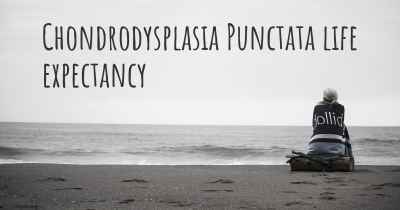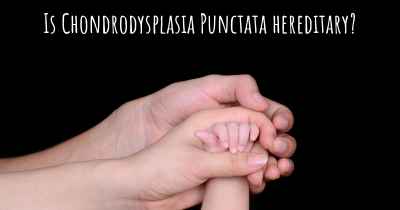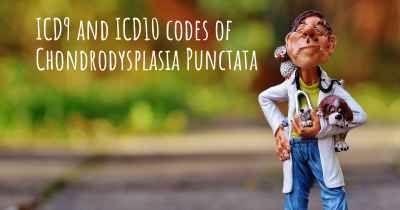What is the history of Chondrodysplasia Punctata?
When was Chondrodysplasia Punctata discovered? What is the story of this discovery? Was it coincidence or not?

Chondrodysplasia Punctata: A Historical Overview
Chondrodysplasia punctata (CDP) is a rare genetic disorder characterized by abnormal development of cartilage and bone. The condition was first described in medical literature in the early 20th century, and since then, significant progress has been made in understanding its causes, symptoms, and treatment options.
Early Discoveries and Classification:
The term "chondrodysplasia punctata" was coined by the German physician Rhoda Erdmann in 1914. Erdmann observed punctate calcifications in the cartilage of a stillborn infant, leading to the identification of this distinct disorder. However, it wasn't until the 1960s that further research shed light on the underlying genetic causes of CDP.
Genetic Basis:
CDP can be caused by mutations in several different genes, resulting in different types of the disorder. The most common form is called rhizomelic chondrodysplasia punctata (RCDP), which is caused by mutations in the PEX7 gene. This gene provides instructions for producing a protein involved in the import of specific enzymes into cell structures called peroxisomes. Other forms of CDP are associated with mutations in genes such as DHAPAT, AGPS, and GNPAT, which are also involved in peroxisome function.
Clinical Presentation:
Chondrodysplasia punctata can present with a wide range of symptoms and severity, depending on the specific genetic mutation and its impact on peroxisome function. Common features include skeletal abnormalities, such as shortening of the long bones (rhizomelia), punctate calcifications in cartilage, and characteristic facial features. Additionally, individuals with CDP may experience intellectual disability, vision and hearing problems, respiratory difficulties, and other organ abnormalities.
Advancements in Diagnosis:
Over the years, advancements in medical technology and genetic testing have greatly improved the diagnosis of chondrodysplasia punctata. Prenatal ultrasound can detect skeletal abnormalities and calcifications, allowing for early identification of affected fetuses. Molecular genetic testing can confirm the specific genetic mutation responsible for CDP, enabling accurate diagnosis and genetic counseling for affected individuals and their families.
Treatment and Management:
Currently, there is no cure for chondrodysplasia punctata, and treatment primarily focuses on managing the symptoms and complications associated with the disorder. Multidisciplinary care involving various medical specialists, such as orthopedists, ophthalmologists, and geneticists, is crucial to address the diverse needs of individuals with CDP. Supportive measures may include physical therapy, assistive devices, surgical interventions, and early intervention programs to optimize developmental outcomes.
Research and Future Directions:
Ongoing research efforts are aimed at further understanding the molecular mechanisms underlying chondrodysplasia punctata and developing potential therapeutic interventions. Animal models, such as mice with specific genetic mutations, have been instrumental in studying the disease and testing potential treatments. Additionally, advancements in gene therapy and targeted molecular therapies hold promise for future treatment options.
Conclusion:
Chondrodysplasia punctata is a rare genetic disorder with a complex history. From its initial description in the early 20th century to the current era of advanced genetic testing and research, significant progress has been made in understanding the causes, diagnosis, and management of this condition. While there is still much to learn, ongoing research offers hope for improved outcomes and potential therapeutic options for individuals affected by chondrodysplasia punctata.








